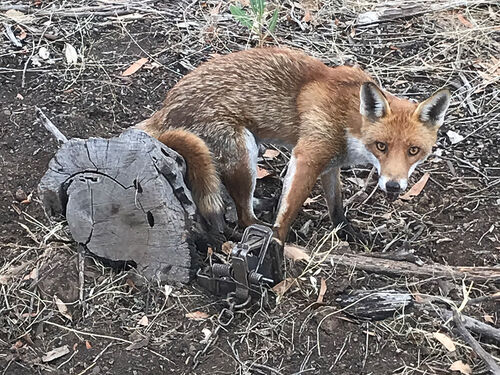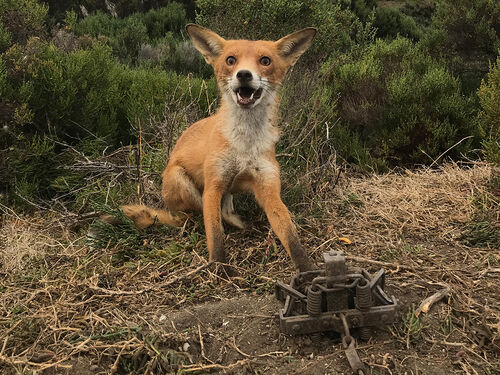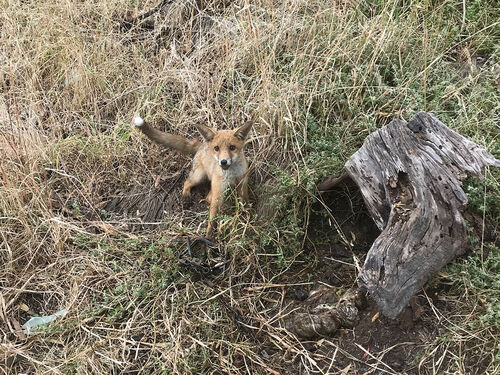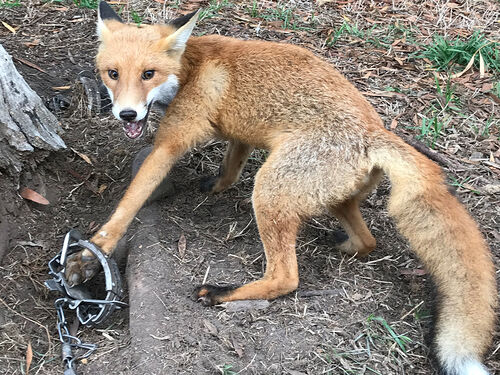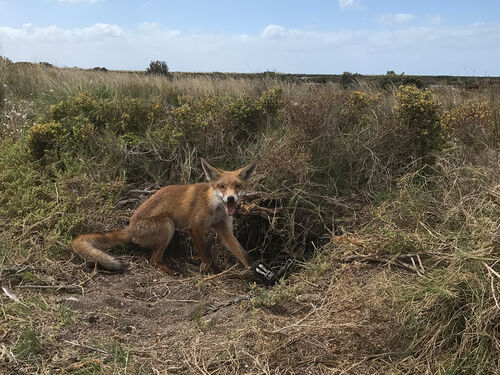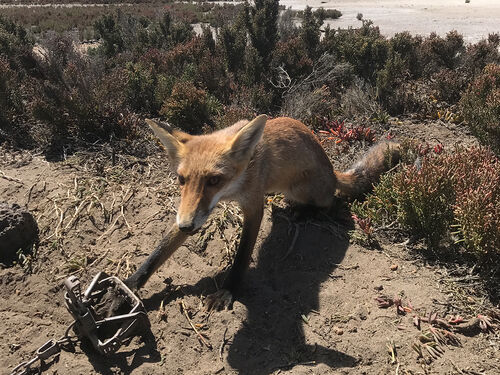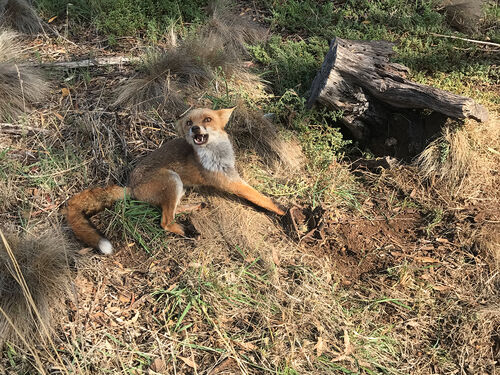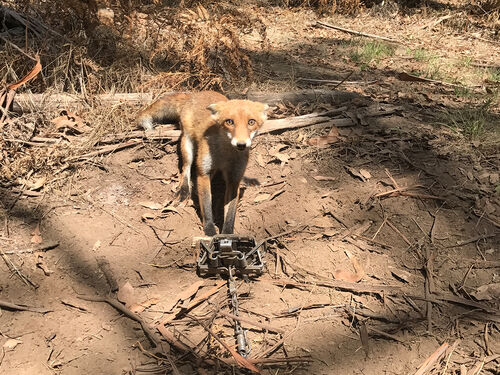Foxes
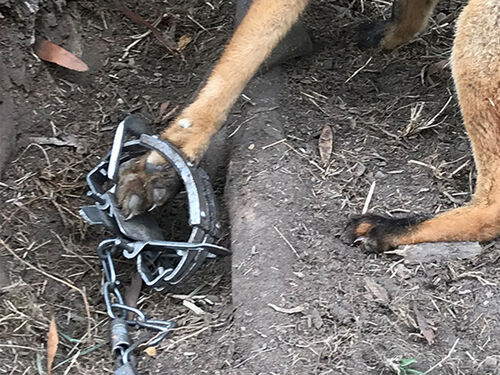
The European Red Fox (Vulpes vulpes) was originally released near Melbourne, Victoria, in 1845.
Foxes have had a major impact on the Australian fauna, preying on ground nesting birds, mammals and reptiles. Moreover foxes compete with Australian native animals for food and habitat and can act as a reservoir of disease for wildlife and domestic animals.
The fox survives in many different habitats and is mostly nocturnal. Both males and females are sexually mature at the age of one year and litters, averaging four cubs, are born during August and September.
The fox causes significant economic losses to farmers by preying on newborn lambs, goats and poultry, and are a very smart animal that can be difficult to catch.
At Rabbitbusters we target the fox by placing leghold traps in specific locations where foxes are causing problems. When using the leghold traps, if we attract the wrong animal to the area it can be released with little more than a bruised foot.
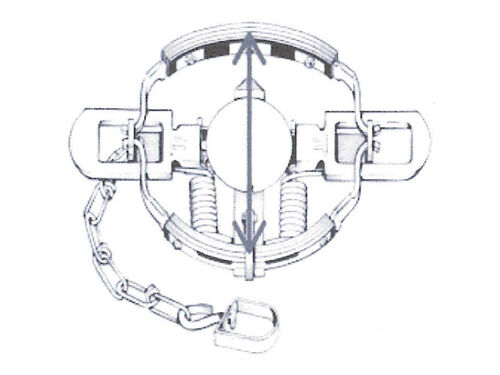 Leg hold traps: Click here for more information about leghold traps and their use and regulation in Victoria.
Leg hold traps: Click here for more information about leghold traps and their use and regulation in Victoria.
Size of traps that can be used:
Trap sizes are based on the jaw spread of the trap. This is the maximum distance between the internal metal surfaces of both jaws, when measured perpendicular to a line drawn through the jaw pivot points when the trap is in the set position (see arrow in image).
Jaw spread must be:
- no more that 10cm - small leghold traps which are to be used only for rabbits
- between 10.1cm and 14cm - large leghold traps used for foxes and declared feral cats
- between 13cm and 15.5cm - large leghold traps used for wild dogs
What features must a leghold trap have?
- Serrated steel jaw leghold traps cannot be used to trap any animal and the sale of them is illegal.
- The Jaws of the leghold traps must be padded with commercially manufactured rubber pads designed to be used for the particular brand, size and design of the trap.
- The jaw of the trap must be offset so there is a distance of at least 6mm between the metal parts of the jaws when the jaws are closed. There must be a spring in the anchor chain of the trap to act as a shock absorber for the purposes of reducing the chance of injury to the captured limb.
- The anchor chain must also have a minimum of 2 swivels, with one located at each end of the anchor chain, so that the trap can twist if the animal struggles to escape. The anchor chain must be attached to the centre of the baseplate of the trap.
- The pan tension of the trap must be adjustable so that it can be set at a tension required for the target species to trigger the trap. Correctly setting pan tension can help minimise the chances of capturing non-target species (pets and wildlife).
How often must traps be checked?
Traps must be inspected at least once every 24 hours.
Leghold traps should be checked as regularly as possible, to minimise injury, pain and distress of trapped animals. An animal must not be left alive in a leghold trap for more than 24 hours.
Until 1st December 2024, the minister may approve a longer period of up to 72 hours for leghold trapping of wild dogs under the Victorian Wild Dog Program. Any approval applies only for leghold traps set for wild dogs by a person employed or authorised for the purpose of the Victorian government program for managing wild dogs.

